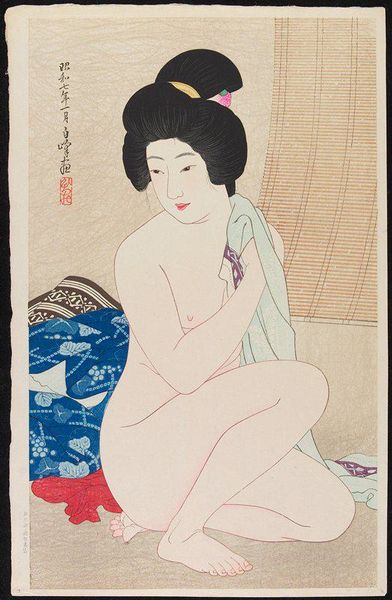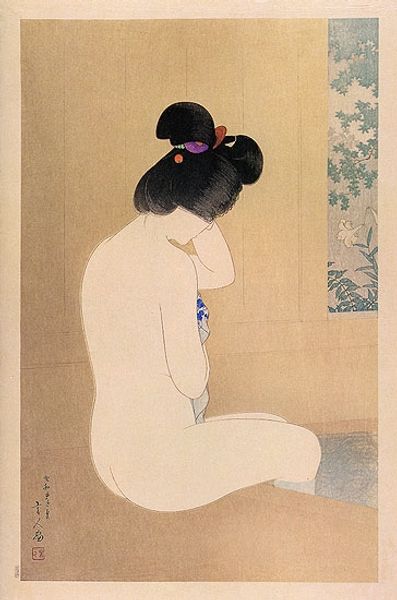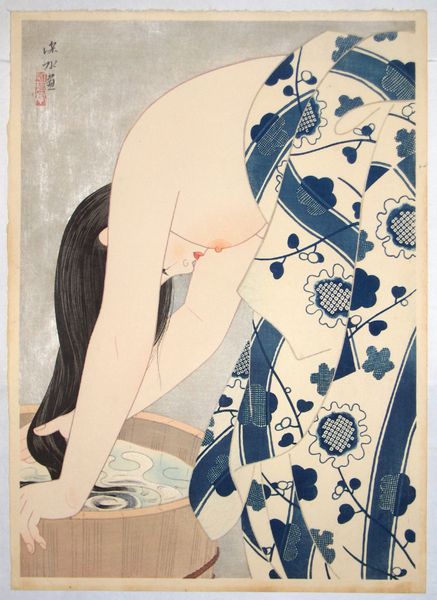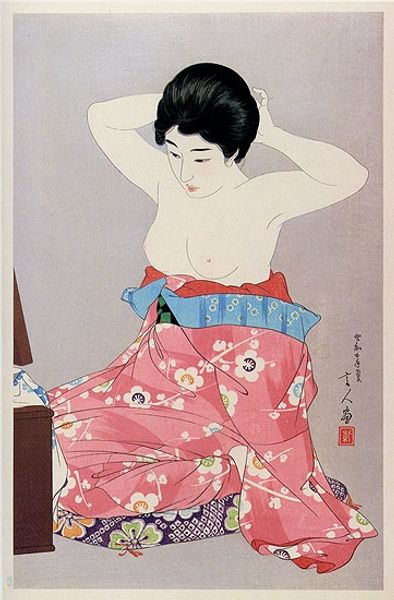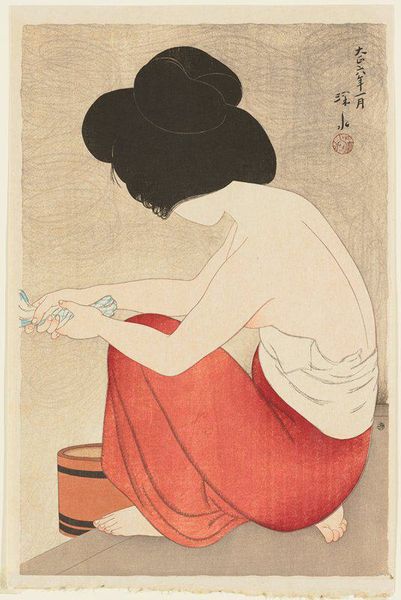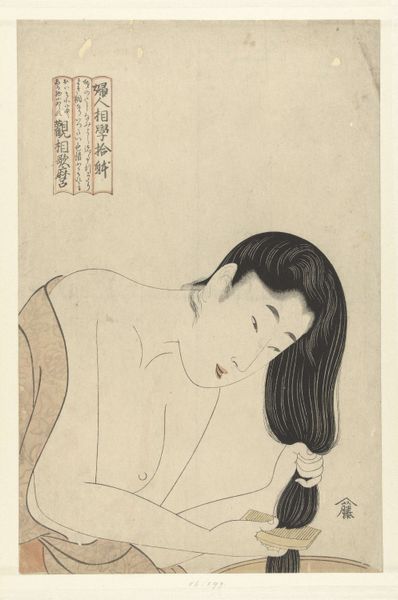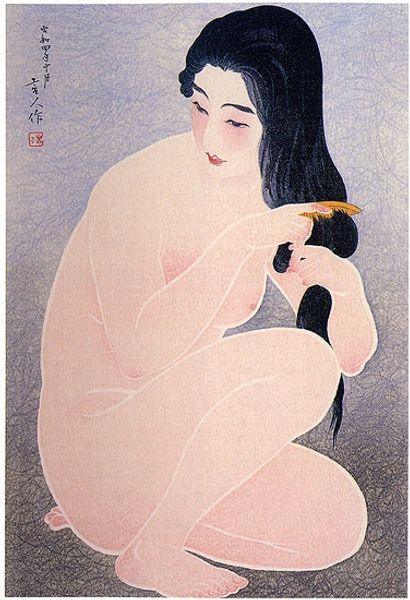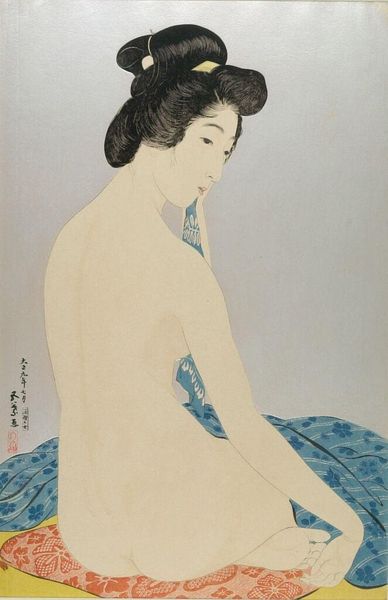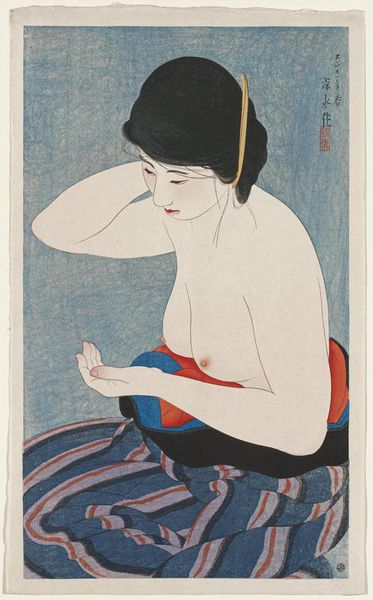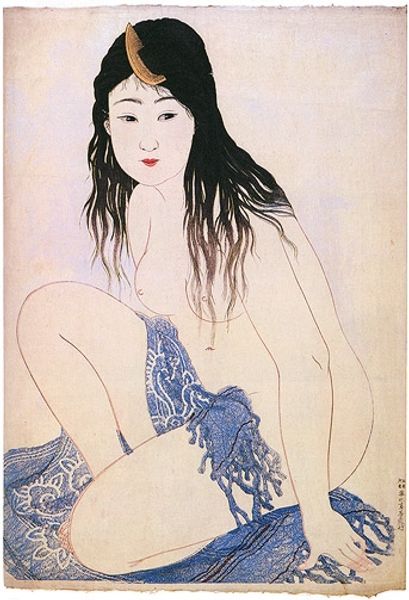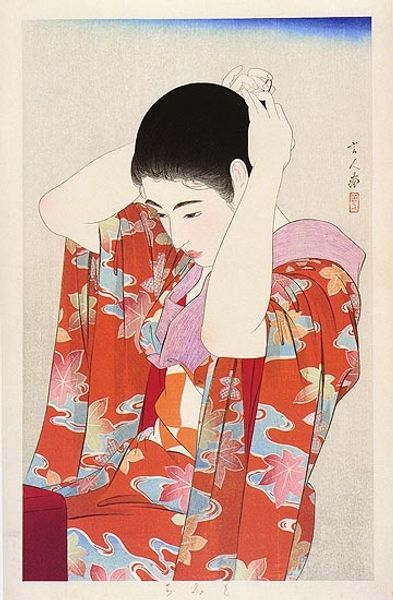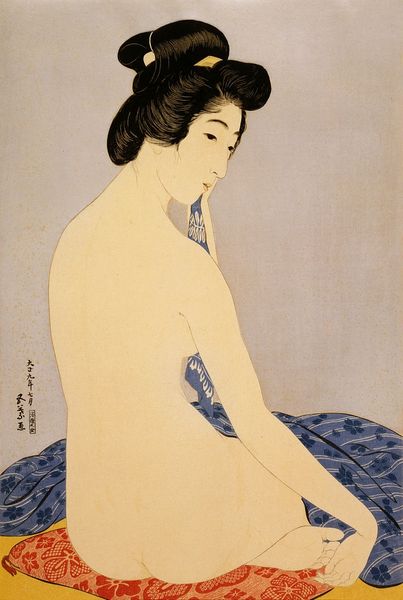
Dimensions: 14 11/16 × 9 3/4 in. (37.31 × 24.77 cm) (image, ōban)
Copyright: No Known Copyright
Editor: Natori Shunsen's "Combing Hair," made in 1928. It's a woodblock print with ink and watercolor. The patterned fabric seems to jump out, doesn't it? What do you notice about how this piece was made, and perhaps, what that process tells us? Curator: Well, immediately I'm drawn to the materiality of the woodblock print itself. We often overlook the labor involved. Consider the carving of the block, the layering of inks and watercolor, and how that speaks to a larger system of production. The woodblocks themselves were commodities traded amongst craftsmen, and understanding that market and access to those materials can affect the interpretation. How do you think the medium itself impacts the depiction of this figure? Editor: That’s fascinating! I hadn't thought about the woodblock itself as part of the narrative. The flat planes of color and the clear lines created by the wood seem to emphasize a kind of stylization rather than realism. Was that common for this period, or specifically tied to the "ukiyo-e" tradition? Curator: Exactly. The stylized forms you point out are crucial. “Ukiyo-e” prints like this one were originally conceived of and targeted to an emerging merchant class as accessible consumer goods. So, what seems "traditional" was, at its inception, a product tied to broader socioeconomic shifts. Considering her pose: is this image challenging norms of beauty and idealization? Editor: It seems to present a mundane moment, less idealized than the European nudes I've studied, and I realize that mundane is tied to her consumer context! Thinking about the artist’s role in this, are there other prints with related techniques we can compare? Curator: Indeed. You've now identified connections between material, method, social standing, and subject, all crucial aspects of a deeper inquiry. It challenges the easy divide between "art" and "craft," showing their intertwined existence. Editor: This perspective has broadened how I interpret prints. Thanks for shifting the way I perceive not just what's depicted, but also how the art object itself is positioned in society.
Comments
No comments
Be the first to comment and join the conversation on the ultimate creative platform.
